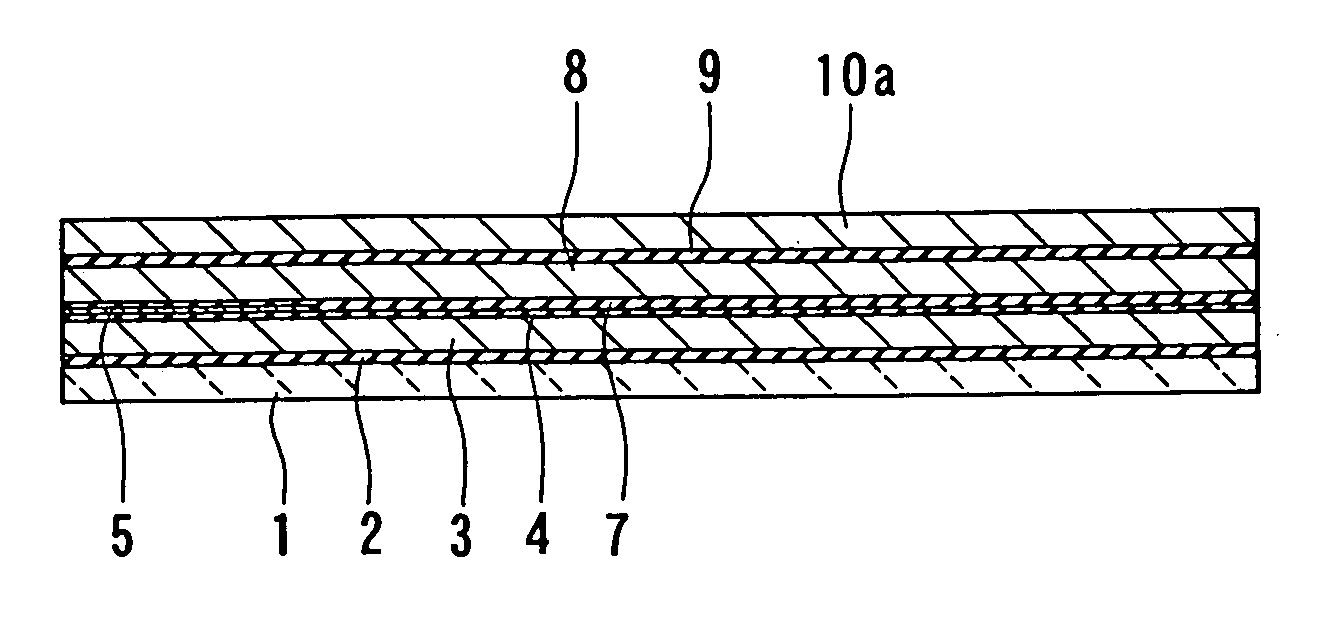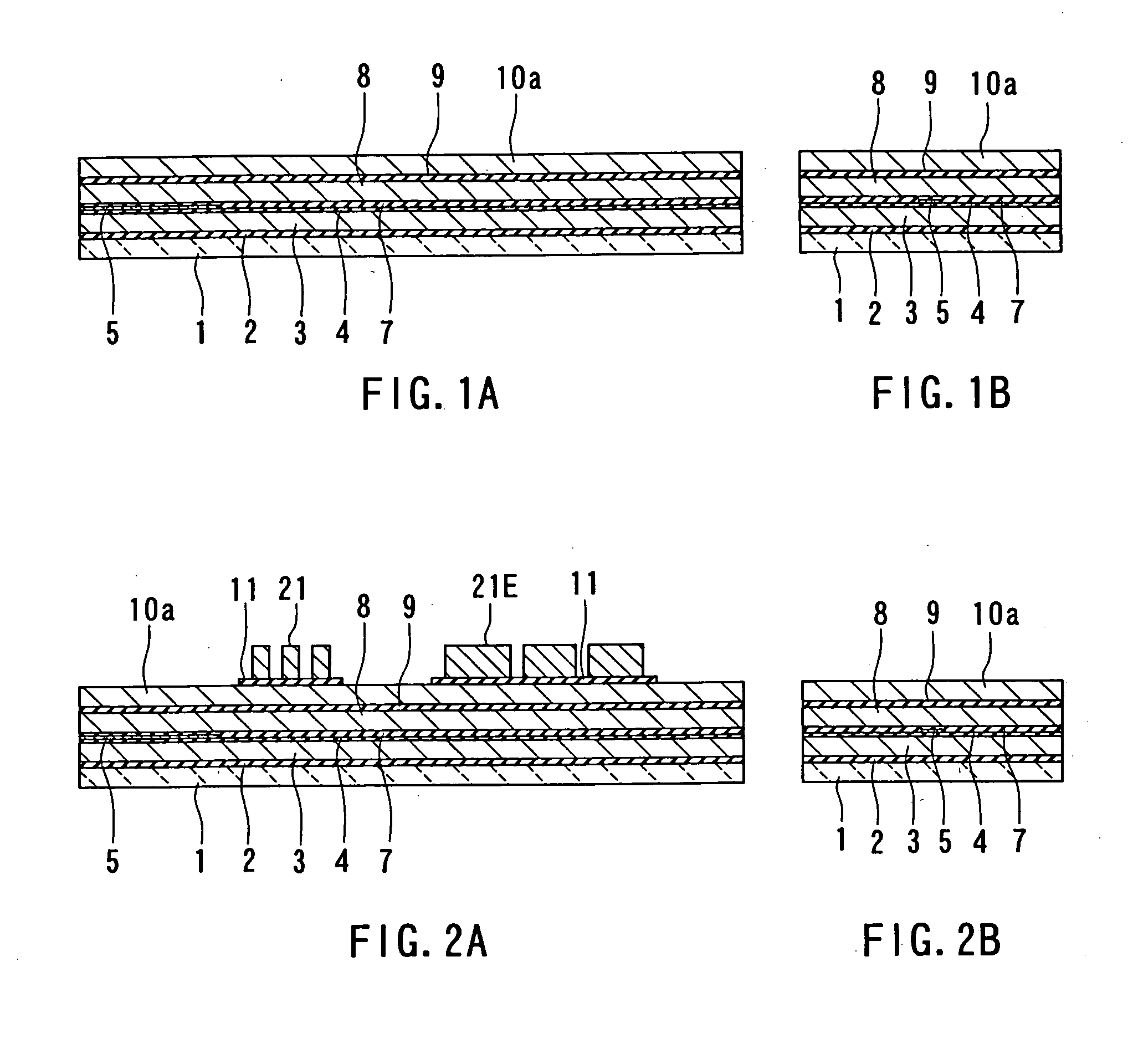Method of manufacturing thin-film magnetic head
a thin-film coil and magnetic head technology, applied in the field of thin-film magnetic head manufacturing, can solve the problems of increasing the resistance of increasing the resistance of the linear conductor portion and the resistance of the entire thin-film coil, and increasing the probability of the magnetic pole portion colliding with the recording medium, etc., to achieve excellent recording characteristics, small resistance, and small magnetic path length
- Summary
- Abstract
- Description
- Claims
- Application Information
AI Technical Summary
Benefits of technology
Problems solved by technology
Method used
Image
Examples
first embodiment
[0126] First, a method of manufacturing a thin-film magnetic head according to the invention will be described with reference to FIGS. 1A to 13A, FIGS. 1B to 13B, FIG. 14, and FIG. 15. FIGS. 1A to 13A are cross sections each orthogonal to the air bearing surface and the top surface of the substrate. FIGS. 1B to 13B are cross sections of the magnetic pole portion each parallel to the air bearing surface. FIG. 14 and FIG. 15 are plan views for illustrating the method of forming a thin-film coil of the present embodiment.
[0127] In the method of manufacturing the thin-film magnetic head of the present embodiment, as shown in FIGS. 1A and 1B, an insulating layer 2 made of alumina (Al2O3), for example, is first deposited to a thickness of approximately 2 to 5 μm on a substrate 1 made of aluminum oxide and titanium carbide (Al2O3—TiC), for example. Next, a bottom shield layer 3 intended for a reproducing head, made of a magnetic material such as Permalloy, is formed to a thickness of appro...
second embodiment
[0218] Now, a thin-film magnetic head and a method of manufacturing the same according to the invention will be described with reference to FIGS. 30A to 45A, FIGS. 30B to 45B, and FIGS. 46 to 50. FIGS. 30A to 45A are cross sections each orthogonal to the air bearing surface and the top surface of the substrate. FIGS. 30B to 45B are cross sections of the magnetic pole portion each parallel to the air bearing surface. FIGS. 46 to 50 are plan views for illustrating the method of forming a thin-film coil of the present embodiment.
[0219] The manufacturing method of the present embodiment is the same as that of the first embodiment up to the step of forming the first layer 10a of the bottom pole layer 10. The bottom pole layer 10 includes the first layer 10a, and second to seventh layers 10b-10g to be described later.
[0220] Then, in the present embodiment, as shown in FIGS. 30A and 30B, an insulating film 11 made of alumina, for example, is formed on the first layer 10a to a thickness of...
third embodiment
[0273] Now, a thin-film magnetic head and a method of manufacturing the same according to the invention will be described with reference to FIGS. 51A to 62A and FIGS. 51B to 62B. FIGS. 51A to 62A are cross sections each orthogonal to the air bearing surface and the top surface of the substrate. FIGS. 51B to 62B are cross sections of the magnetic pole portion each parallel to the air bearing surface.
[0274] The manufacturing method of the present embodiment is the same as that of the second embodiment up to the step of patterning the first layer 10a by selectively etching the first layer 10a using the photoresist layer 12 as a mask, as shown in FIGS. 31A and 31B.
[0275] Then, in the present embodiment, as shown in FIGS. 51A and 51B, after removing the photoresist layer 12, an intercoil insulating film 83 is formed to cover the entire top surface of the laminate. The material, thickness and forming method of the intercoil insulating film 83 of this embodiment are the same as those of t...
PUM
| Property | Measurement | Unit |
|---|---|---|
| width | aaaaa | aaaaa |
| width | aaaaa | aaaaa |
| thickness | aaaaa | aaaaa |
Abstract
Description
Claims
Application Information
 Login to View More
Login to View More - R&D
- Intellectual Property
- Life Sciences
- Materials
- Tech Scout
- Unparalleled Data Quality
- Higher Quality Content
- 60% Fewer Hallucinations
Browse by: Latest US Patents, China's latest patents, Technical Efficacy Thesaurus, Application Domain, Technology Topic, Popular Technical Reports.
© 2025 PatSnap. All rights reserved.Legal|Privacy policy|Modern Slavery Act Transparency Statement|Sitemap|About US| Contact US: help@patsnap.com



